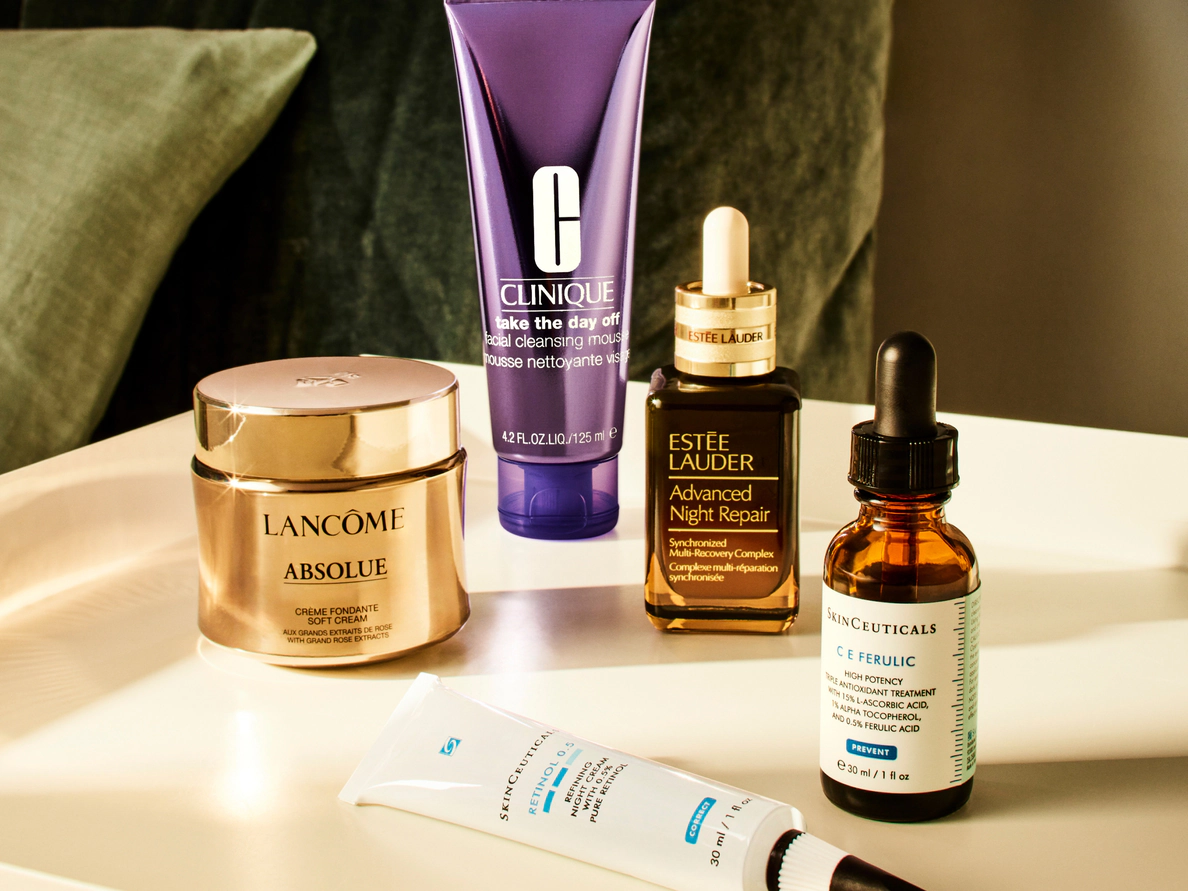Your Everyday Skincare Routine For Combination Skin
Caring for combination skin is a balancing act. With dry bits here and oily patches there, finding the sweet spot between cleansing and soothing, unclogging and hydrating is key.
But with so much information about caring for combination skin out there, deciphering isn’t easy. Neither is understanding which skincare products are right for you.
That’s why we’re here: To demystify the mysterious. To help you find a combination skin routine tailored to your skin’s needs. Because the more you know, the more you glow.
Explore our skincare guide, backed by Dermatologist Dr Cara McDonald, for everything you need to know to get that balance just right.
Step 1: Cleanse
A cleanser’s job is to keep your skin fresh and healthy by removing build-up and unclogging pores. Keep every part of your face happy with a gentle product that’s specifically created for combination skin. The best face cleansers for combination skin contain ingredients like hyaluronic acid, lactic acid, retinol, vitamin E and vitamin C, which work for dry and oily skin. These elements boost your skin’s natural ability to keep itself moisturised without promoting extra oil production.
How to apply cleaners to combination skin:
Step 1: Wet face with lukewarm water
Step 2: Massage a 10c coin-sized amount into the face and neck in a circular motion
Step 3: Rinse with cool water
Step 4: Pat skin dry to prepare for toning
Cleanse morning and evening.
Step 2: Use Toner
Combination skin responds best to a toner containing ingredients like salicylic acid, lactic acid and witch hazel, as these have oil-absorbing and hydrating properties. Some people question whether toner is necessary for combination skin. While it’s not a must, it can offer another layer of cleansing while hydrating and preparing your skin to soak up further products. The good news is you can decide what works for your skin and your lifestyle.
How to apply toner to combination skin:
Step 1: Apply a small amount of toner to a cotton ball or pad
Step 2: Rub gently over the face using an upward motion
Step 3: Leave for a minute or two to dry for maximum efficacy before applying the next product
Apply morning and night after cleansing.
Step 3: Apply Serum
Adding serums as a step in your skincare routine will help to hydrate and protect your skin. Combination skin can generally tolerate most common serum ingredients. Still, it’s best to opt for a lighter formula with a high concentration of active ingredients, including vitamin C, hyaluronic acid, Vitamin B, glycolic acid, salicylic acid, Vitamin E and ferulic acid. These ingredients will nourish your skin without drying it out.
How to apply serum to combination skin:
Step 1: Mist or dampen the face first for maximum efficacy
Step 2: Add a pea-sized amount to your palms and rub your hands together
Step 3: Gently apply to the face using small tapping motions with your fingertip or palm
Apply morning and night.
Step 4: Moisturise
An important step in keeping combination skin healthy is to use a lightweight moisturiser that hydrates without clogging pores. Look for ingredients like non-comedogenic oils, silica microbeads and cornstarch, antioxidants, and ceramides that will hydrate and absorb excess oil without drying out. Another option is to use two moisturisers - a creamy moisturiser for dry spots and lightweight, water-based gel formula for oily areas.
How to apply moisturiser to combination skin:
Step 1: If using a serum, apply moisturiser to the skin before it dries
Step 2: Dot around the face, applying a little extra in high-sensitivity areas
Step 3: Gently rub into the skin using an upward motion
Step 4: Leave to dry before applying SPF or makeup
Apply morning and night.
Step 5: Finish With SPF
Keep your combination skin healthy and balanced by protecting your skin from Australia’s searing rays with a broad-spectrum SPF of at least factor 30. Reach for a lightweight, oil-free, and non-comedogenic product that contains ingredients like hyaluronic acid and ceramides which protect and hydrate your skin without drying. Stay away from heavy ingredients like shea butter, cocoa butter, and coconut oil as these can clog pores and cause blemishes.
How to apply SPF to combination skin:
Step 1: Dot SPF on forehead, nose, cheeks, chin, and neck with fingertips
Step 2: Rub gently into the skin to achieve even coverage
Apply daily in the morning after moisturiser and before makeup, even in the winter. Reapply every 2 hours if outdoors.
Combination Skin 101
By soaking up a little knowledge about combination skin, you can make that seesaw much easier to balance. Read on to learn how.
Defining Combination Skin - So, what exactly is combination skin? It’s skin that features two or more different skin types on the face – often dry vs oily. Because of the needs of this skin type, you may require different products and a fine-tuned skincare routine to achieve a healthy, balanced glow.
Combination Skin Characteristics - Combination skin can mean the skin looks different in different areas of the face. Typically, the t-zone (forehead, nose, and chin) are oilier, while the cheeks, jaw and hairline are dryer. Some signs may include shiny skin, dry patches, blemishes, and less commonly dry, flaky patches on the scalp.
What Causes Combination Skin - There are various causes for combination skin, including genetics, environmental factors, changing seasons and environments, lifestyle habits, harsh products that contain drying ingredients, or excessively oily products. Combination skin can change with stress or hormone fluctuation, meaning there may be times when combination skin is more prominent.
Combination Skin Tips
While combination skin can be tricky to manage, knowing how to care for it and what skincare products to use can go a long way in keeping it balanced, fresh and clear.
Know Your Ingredients - Knowledge is the ultimate active ingredient when it comes to caring for sensitive skin. Why? Because the more you know about what’s going into your face, the easier it is to identify skincare products that trigger. Always opt for gentle ingredients over harsh chemicals. And look out for hero ingredients like hyaluronic acid, chamomile, aloe vera, ceramides and niacinamide.
Use Lukewarm Water - Lukewarm water is much gentler on your skin than hot water - which can strip your skin of its protective oils that hold moisture. And for sensitive skin types, this can increase irritation further. Lukewarm water will still remove impurities without damaging your skin. Want to go a step further? Rinse with cold water after cleansing to tighten pores and promote blood circulation.
Gentle Exfoliants - News flash: Sensitive skin can be exfoliated. In fact, a gentle, non-abrasive exfoliating product can smooth and soften your complexion and stimulate blood flow to improve its health. Although, it’s smart to stay away from super-strength exfoliators with harsher acids (as these can penetrate the skin’s surface and increase irritation). And careful not to overdo it – once a week max.
Skincare Routines For Every Skin Type
Our skin changes all the time, especially in Australia’s unique climate. So, we’ve created guides for each skin type to help you crack your skin code and prepare for all life’s moments.







